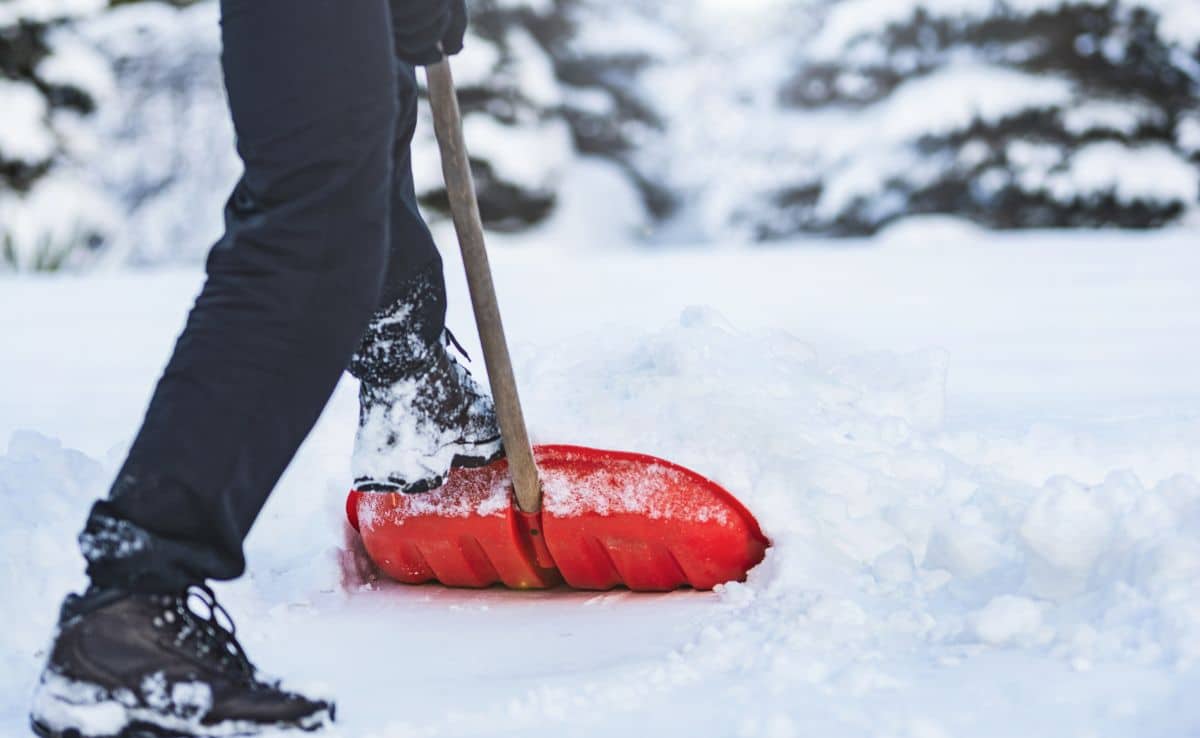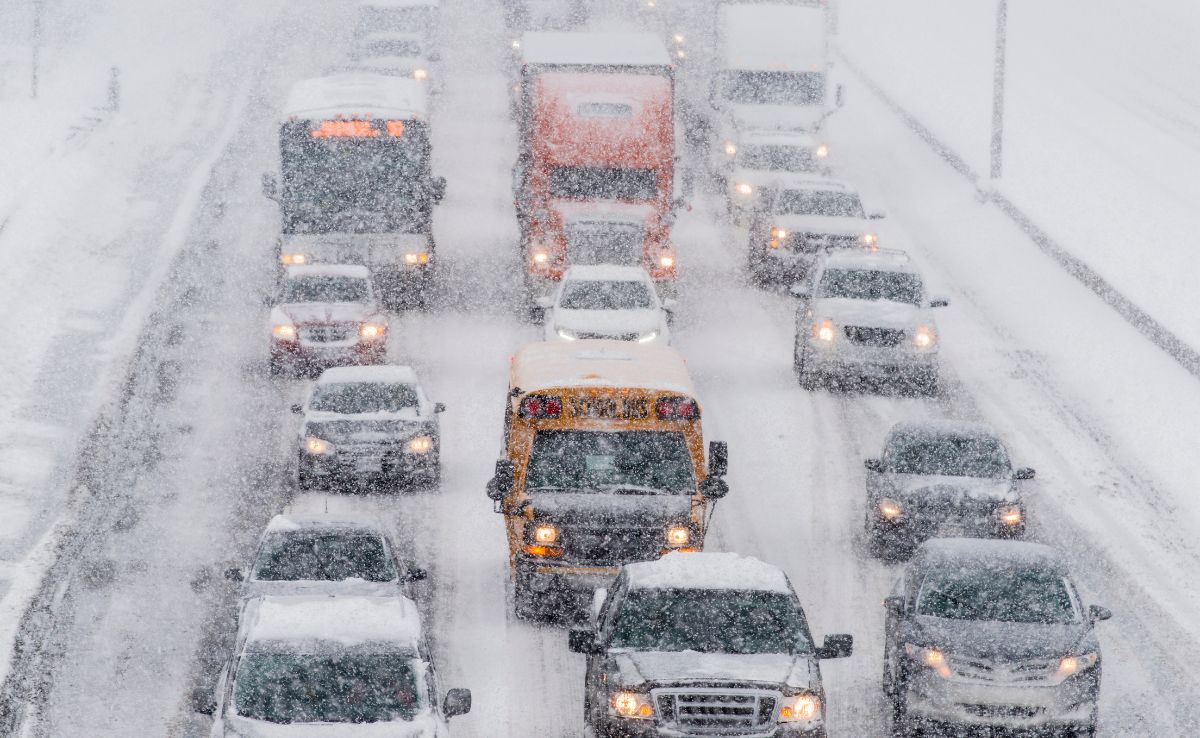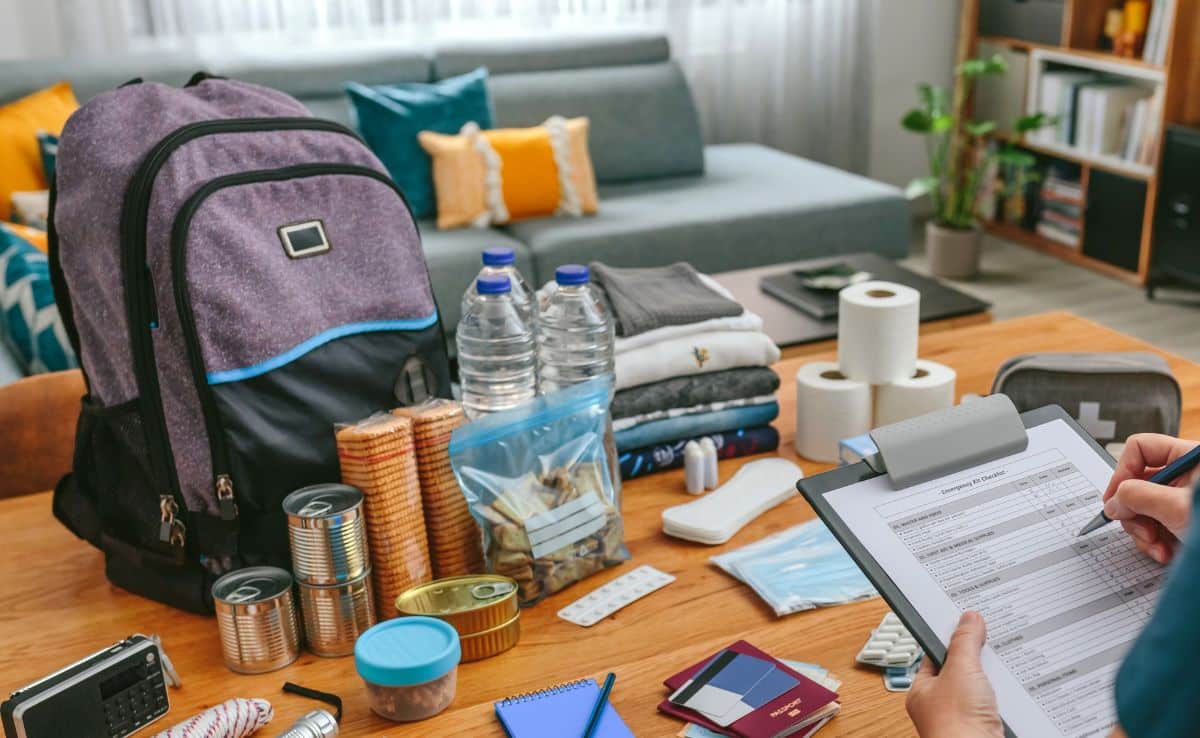35 Winter Weather Safety Tips (2024): While Driving, At Home, For Pets & Checklist
When you purchase through links on our site, we may earn a commission. Here’s how it works.

You already know if you live in an area that experiences extreme winters. But sometimes, it doesn’t have to be a severe storm for you to wish you were more prepared. You can use these tips while at home, at work, or traveling.
Winter Emergency Bag Checklist
Depending on the storm, it’s not uncommon for roads to be snow-covered, power to be out, and for you to be trapped for multiple days. So we recommend having enough supplies in your winter emergency bag for 72 hours.
Keep in mind that you need to have supplies for each person you’re traveling with and who’s at home with you. But for work, you only need to focus on enough supplies for yourself (although you can add some extras in for coworkers if you’d like).
- Emergency Kit
- Food & Water
- Blankets & Warm Clothing (Wool Socks, Hat, Gloves, Thick Pants/Tops, Sleeping Bag, etc.)
- Medications & Prescriptions
- Lighting Source
- Toiletries (Hand Sanitizer, Toothbrush/Toothpaste, Deodorant, etc.)
- Hand Warmers
- Rock Salt (To Melt Ice On Walkways)
- Sand Or Kitty Litter (To Give Tires Traction If Vehicle Is Stuck)
- Snow Shovel Or Snow Blower (Don’t Forget To Properly Fuel & Oil It)
- Dry Wood (If You Have A Wood-Burning Stove Or Fireplace)
- Portable Generator
5 Cold Weather Safety Tips
Other major tips to remember whether you are at home, work, or traveling:
- Don’t forget about your animals. Bring your pets inside and move livestock to sheltered areas with fresh water and food.
- Check on family or elderly people in your neighborhood. If you know a storm is going to hit, offer to bring them to your house so you can help make sure they’re safe. The more bodies in a room mean the more heat produced, but keep in mind you’ll need extra food, water, blankets, etc.
- When the storm hits, stay inside.
- Keep doors and windows shut. If you feel a draft coming in through windows and doors, close the curtains, put blankets up as an extra layer around windows, and put towels along the bottom of doors. If there is no draft, it’s best to let sunlight in during the day but cover the windows at night.
- Stay in one room to conserve energy and heat.
- Use the gear in your winter emergency bag.
- Put on layers.
- Eat and drink regularly.
- If you’re traveling, try to find a gas station, restaurant, or other building to wait for the storm out in and bring your winter emergency bag inside with you.
11 Winter Driving Safety Tips
- Service your vehicle regularly and get it winterized before the winter season.
- Don’t drive unless you absolutely have to.
- Let others know where you’re going, and what route you’re taking, and check in with them during stops and when you arrive at your destination.
- Bring your winter emergency bag with you.
- Make sure tires are properly inflated and have adequate tread.
- Keep your gas tank at least half full; you never know when you could get stranded.
- Drive slowly to give yourself extra time to respond to other vehicles and the elements.
- Increase and decrease your speed slowly.
- Whether you have anti-lock brakes or not, keeping your heel on the floor and applying firm, steady pressure is a more effective way to brake than slamming the brake down to the floorboard.
- Do not use cruise control when it’s snowing or on roads covered with snow or ice.
- Only drive on well-traveled roads and avoid back roads.
8 Things To Do If You Get Stuck In Snow

- Call for help.
- Put on extra layers of clothing and blankets from your winter emergency bag. Activate hand warmers and put some in your shoes and in your pockets to help keep you warm.
- Stay in your vehicle as much as possible. Your vehicle will protect you from severe weather, and it will make it easier for rescuers to find you.
- If you’re going to attempt to dig out your vehicle, listen to your body and stop if you need to. It won’t help anyone if you pass out or injure yourself.
- Try to increase your visibility by tying a brightly colored cloth to the antenna or placing it at the top of a rolled-up window. When it’s dark, turn on the dome light, which only uses a small amount of electricity. If you have flares, light them.
- Keep the exhaust pipe clear. When blocked, it could cause deadly carbon monoxide (CO) to leak into the vehicle. (You could purchase a CO detector for cars.)
- Only run the engine and heat long enough to remove the chill to conserve fuel.
- Clap your hands and stomp your feet to help keep proper blood flow.
9 Winter Car Seat Safety Tips
According to the American Academy of Pediatrics, here are some tips you should follow to help keep your child safe in their car seat during the winter.
- Bring the carrier portion of infant seats inside to keep it at a more comfortable temperature for the baby.
- Dress children in thin layers. For example, a child may wear a long-sleeved onesie, then pants and a sweater on top.
- Remember to put hats, mittens, and socks/booties on your child to help keep them warm without interfering with the car seat straps. If your child is a thumb sucker, consider half-gloves with open fingers or carry an extra pair of mittens, so if they get wet, you can replace them with dry ones.
- You should not be able to pinch the straps of the car seat harness. Tighten the straps thoroughly.
- Never put your children under the straps of a car seat with bulky clothing like winter coats and snowsuits. Instead, place a blanket or coat over the straps after you buckle up your child.
- Monitor your child after the vehicle has warmed up. If you’re getting hot in your winter coat, there’s a chance your child is getting warm with a blanket on him. Pull off the road to a safe area or ask a passenger to check how warm your child is. Adjust the car temperature or remove a blanket as needed.
- Nothing should go beneath the child’s body or between the child’s body and the harness straps.
- Never cover your baby’s face.
- Nothing should go in the car seat that didn’t come with the car seat, including an add-on head support or other accessories. These accessories are available to purchase, but it does not mean they’re safe to use.
If the item didn’t come with the car seat, it has not been crash tested and could interfere with protecting your child in the event of a crash.
- Make sure your winter emergency bag includes extra baby items, including:
- Blankets
- Clothing
- Diapers and wipes
- Food (formula, breastmilk, non-perishable snacks, etc.)
Here are some other general car seat safety tips, and this video does an excellent job showing why it’s important to take your child’s coat off before placing them in their car seat.
12 Snow Shoveling Safety Tips
- Warm up your muscles before you begin shoveling by bending side to side or walking in place.
- Wear layers and remove them as you get warm to maintain a comfortable temperature.
- Wear winter boots with grippy soles to keep you warm and give you traction.
- Gloves are more functional, but mittens can help generate more body heat since your fingers are touching.
- Pushing the snow instead of lifting it can reduce the strain on your body. When you do need to lift snow, bend your knees and use your legs.
- Choose an ergonomic shovel.
- Consider a lightweight plastic shovel instead of a heavy metal one to decrease the weight lifted.
- Take breaks after 20 to 30 minutes of shoveling or more frequently if your body needs it.
- Drink water during your breaks and throughout shoveling to stay hydrated.
- Split up your shoveling into multiple chunks. If you know it’s going to be heavy snowfall, consider shoveling periodically throughout the storm to avoid moving large amounts of snow at once.
- Try to shovel shortly after it finishes snowing when it’s lighter and fluffier. Snow that sits becomes wetter, heavier, and harder to move.
- Watch for signs of a heart attack:
- Lightheadedness
- Shortness of breath
- Dizziness
- Tightness or burning in the chest, arms, back, or neck
If shoveling is too much for your body to handle, don’t do it. You may be able to find a snow removal assistance program in your city for the elderly and disabled. If you don’t qualify for help but aren’t in a healthy condition to shovel, ask a neighbor for assistance or consider hiring someone.
Are You Prepared For The Next Natural Disaster?
Did you know winter storms aren’t the only emergencies you should prepare for? If you live in hurricane or tornado areas, you should consider securing your property and protecting yourself. It’s best to do your research beforehand, so that if a storm hits, you’re not running around and unsure about what to do and what you need to pack.



